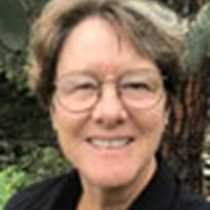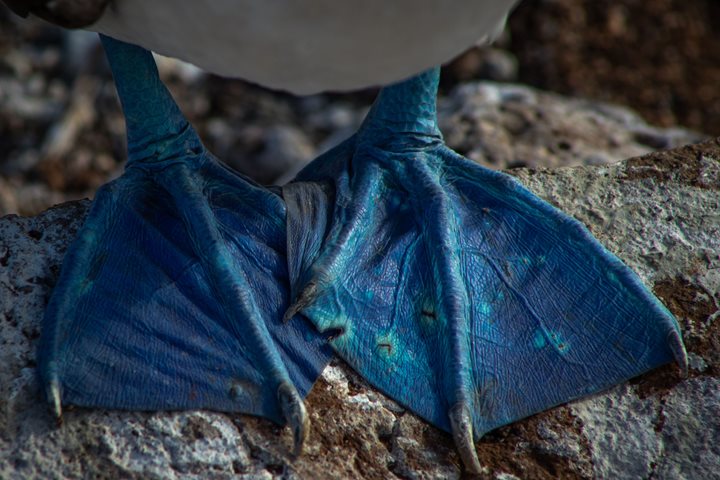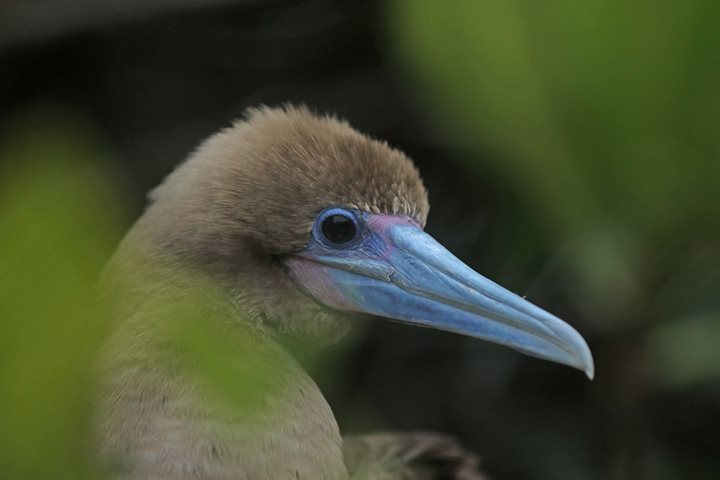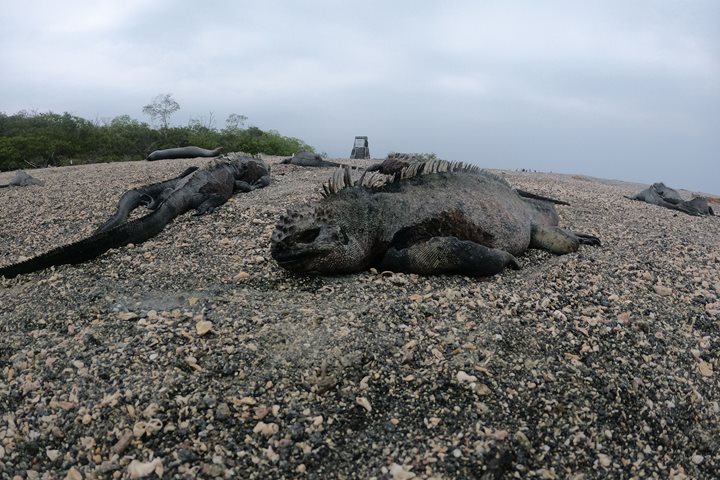When the sun finally came up over the horizon there were already several of us out on the sky deck. Coffee and tea in hand, with binoculars and cameras at the ready, we were looking for marine life. Two fin tips from a mobula ray appeared briefly, white-vented storm petrels, and Galapagos shearwaters soon after. We had a quick look at a sea lion, seemingly by its lonesome, but soon enough a small pod of common dolphins broke the calm surface of the ocean, too. Wolf Volcano towered high in the south and the National Geographic Islander turned to follow behind the dolphins that set an easterly heading. Huge jumps occasionally took place…for joy? For scouting the path ahead? We will never know.
By the time breakfast had ended we had rounded the “nose of the sea horse”, meaning Cape Berkeley was on our port side and the equator line was fast approaching. Everyone held fast in preparation for bump, but in the noise of tooting of the ship’s horn at the precise moment 0°00.00 could be seen on the GPS screens, we forgot about the bump and cheered instead!
A Zodiac ride along the coast of Isabela is a real eye-opener for the uninitiated. From afar tall cliffs thousands of feet high loom over the anchorage. Boulders of impossible size lay tumbled on the shoreline. It looks desolate, but closer in, travelling in our favourite inflatables, marine iguanas were seen swimming slowly back to shore after having fed on algae, Nazca boobies perched on the tops of guano-covered rocks, Galapagos fur seals squished in among the rocks where they live and hide from the hot equatorial sun. We also saw a group of them frolicking (that’s the only word possible) in the water, playing, leaping in their unique sideways fashion, having a grand time all round. Galapagos penguins were spotted on a rock in a small bay and several flightless cormorants were standing on the small boulders near their nesting beach.
By late morning we were back on board and getting ready to go snorkelling. The water temperature was dramatically cooler than back east – by 6 degrees F! This is good news for the marine life of Galapagos. It means up-welling is taking place, which in turn means nutrients are being brought to the surface to feed the lowest levels of the food chain. It’s been a very hard two months in Galapagos for our penguins and cormorants. Fingers are crossed the food supply will pick up soon.
By afternoon we were walking on the island of Fernandina, the youngest island in the archipelago, and I keep hoping someone will have the power to start an eruption around cocktail time (in the evening is best). There is the potential for one here in the islands – we are considered part of the “ring of fire” of the Pacific rim, but not today, unfortunately. Instead the marine iguanas, flightless cormorants and sea lions of Punta Espinoza kept our interest and kept our cameras busy. Sparse vegetation, sand consisting of bits of everything – urchin spines, broken shells, digested coral, volcanic ash – a unique Galapagos melange perfect for macro photography.
Wine-tasting from our fab hotel department was waiting for us upon our return up on the sky deck. Clear skies, calm seas, rose-coloured horizon to the west….still waiting for that eruption….







